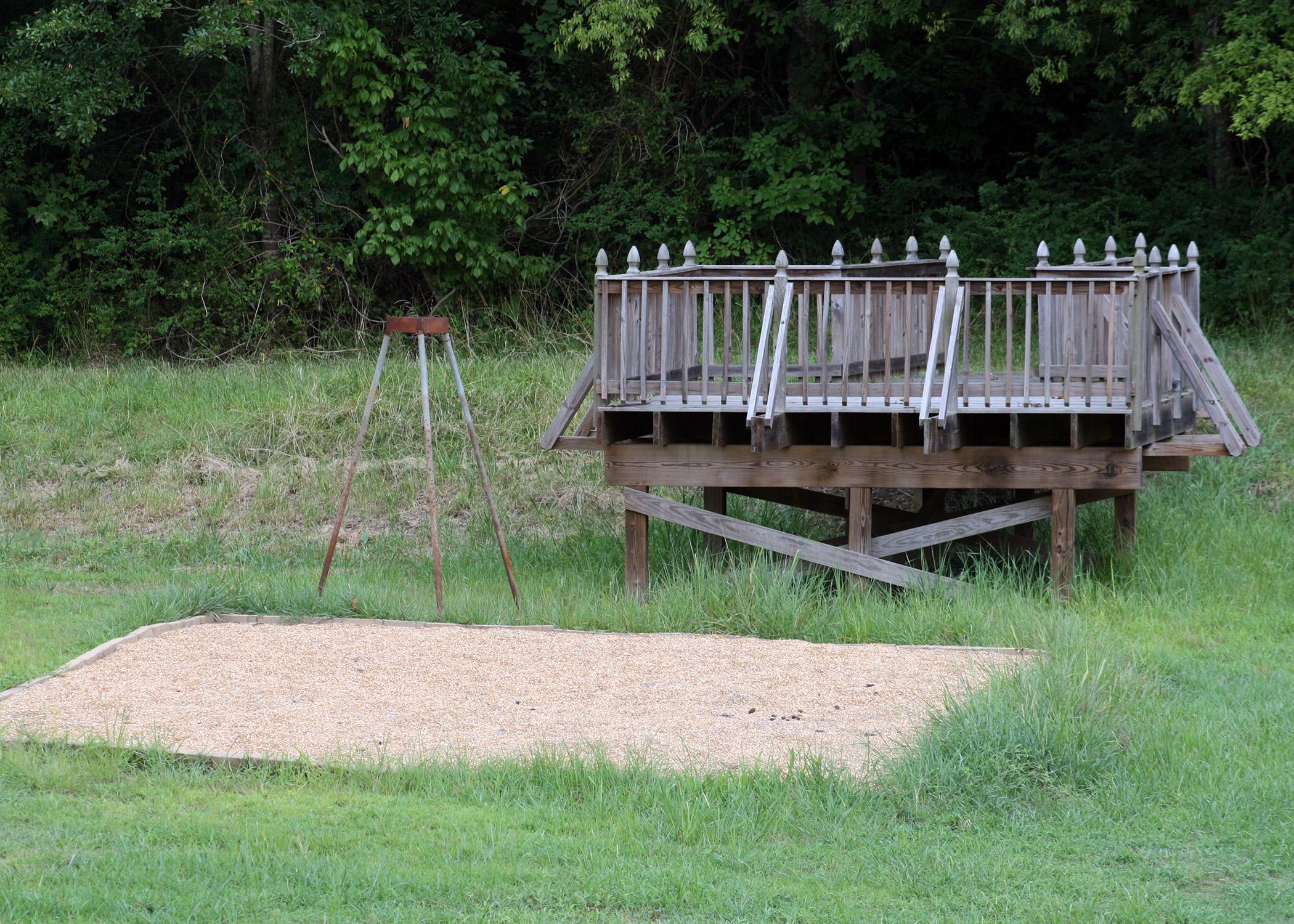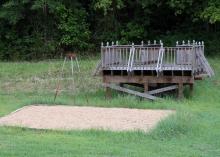Information Possibly Outdated
The information presented on this page was originally released on October 10, 2014. It may not be outdated, but please search our site for more current information. If you plan to quote or reference this information in a publication, please check with the Extension specialist or author before proceeding.
Lowering pond's water in winter is easy, useful
MISSISSIPPI STATE -- Most people think of pond fishing and management as a warm weather affair, but there is much to do -- and catch -- during the cooler months of the year.
Winter drawdown can be a useful tool for the farm pond manager, if done properly. It poses no threat to the fish population and costs nothing if the pond is equipped with a water control structure. Water level drawdown prevents or corrects overcrowding of prey fish and reduces nuisance weeds in ponds.
In late October, lower the water level in the pond to about half the original pond volume. This is easiest in ponds that have mechanical drains or standpipes that can be adjusted for height. Smaller ponds can be pumped down or siphoned using long hoses.
Reduce water levels to expose 35 to 50 percent of the pond bottom. Usually, this is a 2- to 4-foot reduction in water level, but this may vary depending on the pond’s topography and design. Maximum drawdown should be accomplished by mid- to late November. Allow watershed ponds to refill naturally from spring rains, or manually fill levee ponds beginning at the end of January.
Annual winter drawdowns can help maintain a balanced bass and bluegill fishery, especially if the pond is bluegill-crowded. By reducing the water level and pond area, bluegills are driven out of shallow water refuges and concentrate in open water, making them more available for bass to eat. The more bluegill they eat, the bigger the bass get. Additionally, if the bass eat lots of bluegill during the winter, fewer small bluegill are left to compete for food resources in the spring. The remaining bluegill will grow faster.
However, drawdowns can make bass-crowded situations worse. If you have a bass-crowded pond, you’ll need to correct the problem first. Do not use winter drawdowns until pond balance is restored. Ask agents at your county Extension office for assistance with correcting a bass-crowded pond.
Another benefit of water-level reduction is the growth of vegetation on exposed areas during the winter. When these areas are flooded in the spring, the vegetation provides shelter and food sources to newly-hatched fish.
Winter drawdown also helps control certain aquatic weeds by exposing them to freezing and drying. Problem species, such as pondweeds and hydrilla, cannot handle dry and cold conditions and will die back. More cold-tolerant species can be treated with herbicides when they are exposed.
Lowering the water level in winter also provides a good opportunity to do repairs on piers, docks and boat ramps, as well as minor dam repairs and shoreline renovation. Fish attractors, such as brush tops and gravel beds, can be put in place easily while the water is down.
If necessary, deepen the shoreline to 3 feet while water levels are reduced. This will reduce the likelihood of weeds returning. You can then use dirt from the shoreline-deepening operation to build earthen piers at various locations around the pond. These piers increase the shoreline area of the pond and provide additional access for anglers.
Drawdowns should never be done in summer. The extreme temperatures in Mississippi, coupled with the increased activity level of fish and reduced oxygen levels in warm water, likely would result in fish kills during a summer drawdown.
Winter drawdown is an effective winter management technique that requires relatively little effort and offers many benefits to the pond owner. For more information on winter drawdowns, request Mississippi State University Extension Publication 1428, Managing Mississippi Farm Ponds & Small Lakes, from your county Extension office.

Editor’s Note: Extension Outdoors is a column authored by several different experts in the Mississippi State University Extension Service.




